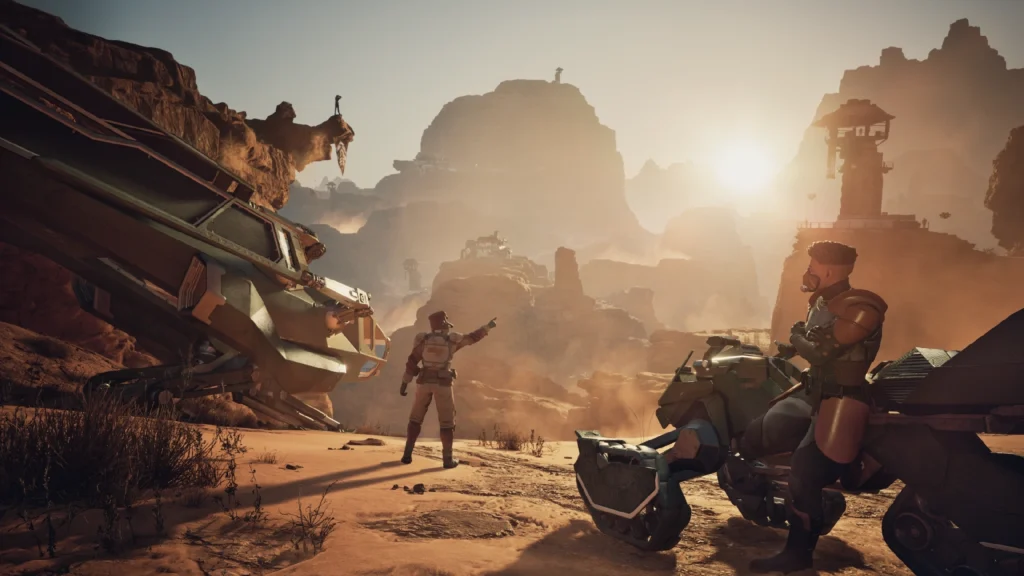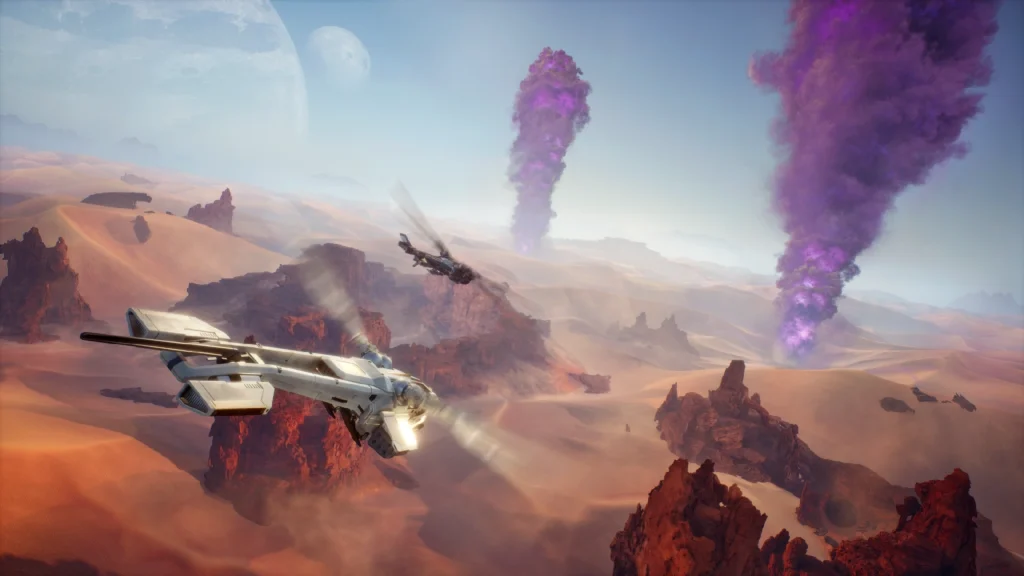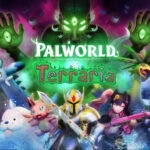Dune: Awakening Review
In this Arrakis, there is no Kwisatz Haderach—only survivors.

Dune: Awakening doesn’t adapt Frank Herbert’s world—it reimagines it. This isn’t your father’s Arrakis, or Denis Villeneuve’s either. Instead, Funcom’s take on the legendary desert planet throws you into an alternate-timeline MMO where survival isn’t just a mechanic—it’s the culture. And like the sands of Arrakis, it shifts under your feet the moment you think you understand it.
Released on June 10, 2025, Awakening builds on Dune lore by spinning a “what if”: Paul Atreides never came to power, the Fremen disappeared, and Arrakis is a battlefield of warring Houses Atreides and Harkonnen. For a Dune fan, it’s a playground; for a newcomer, it’s a brutal crash course in environmental management, base construction, and hostile player conflict.
- Platform: PC, Xbox One, Xbox Series X|S, PS5
- Publisher: Funcom
- Developer: Funcom
- Game Type: Survival Crafting
- Player Count: MMO
- Business Model: Buy-to-Play, Season Passes
- Release Date: June 10, 2025



Welcome to Arrakis
Armed with my love for Frank Herbert’s epic saga, I leapt into Dune: Awakening expecting survival thrills, spice-fueled politics, and the looming dread of sandworms. But Funcom’s ambitious MMO isn’t just a Dune reskin—it’s a comma in a vast sci-fi drama, one that’s part survival sim, part factional warfare, and mostly unwelcoming to lone wolves—at least in PvP. PvE is solo-friendly enough, but the best gear and rarest resources are locked behind PvP zones, so expect to eventually squad up or miss out.
It may take a while to find your footing—and even longer to find shade—but once you adapt, you start to see the outline of something rare: a survival MMO that’s actually trying to mean something.

You’ll Die Thirsty, but Damn It Looks Good
If there’s one thing Dune: Awakening nails from the first login, it’s the sense of scale. The moment you step out into the wasteland, you’re not in a cozy zone map—you’re on a planet that wants you dead. And it looks the part. Sandstorms crawl over the horizon like predators. Heat distortion makes landmarks shimmer. The sun never lets up. This isn’t just a backdrop; it’s a character, and it hates you.
Visually, the game walks a line between stylized sci-fi and grounded realism. Don’t expect photorealism, but everything from the worn-down outposts to the vertical cliffscapes of The Deep Desert feels curated and alive. It’s less about jaw-dropping fidelity and more about building a world that feels harsh, lived-in, and Fremen-free. That absence is deliberate—and eerie. Arrakis in Awakening feels like a puzzle missing its heart.
Audio pulls its weight too. The sandworms don’t just show up—they announce themselves with a thunder that rattles your HUD. Wind whistles through broken Harkonnen steel. Even base interiors hum with tension. The soundtrack leans ambient, which works well in a world where silence is often the loudest threat.
Performance-wise, it’s stable enough for what it’s trying to do. Occasional stutters pop up during large-scale skirmishes or heavy storms, and texture pop-in isn’t unheard of, but nothing game-breaking. Funcom’s custom engine holds up surprisingly well, especially for an open-world MMO of this scale.
Dune: Awakening doesn’t want to overwhelm you with spectacle. It wants you to sweat—and then it wants you to keep going. It’s not always beautiful, but it is striking, and more importantly, it feels like Dune.

Combat, Survival, and the Spice-Fueled Grind
You’ll fight for everything on Arrakis—water, shelter, spice, and time. Dune: Awakening leans heavily into its survival mechanics without going full masochist. You’ll need to manage hydration, temperature, inventory weight, and gear durability, but not to the point where you’re pausing every few minutes to snack or sip. Thirst can kill you, but it won’t hijack your entire play session.
Combat is where the MMO identity starts to flex. Real-time aiming, dodging, and ability cooldowns make it feel closer to an action RPG than a hotbar MMO. Gunplay is snappy and surprisingly generous with aim assist, especially if you’re used to something like Destiny or The Division. Melee is weighty but a little stiff, and in large-scale PvP it can get chaotic fast. Armor and weapons follow a tiered structure tied to progression, crafting, and PvP dominance. Better gear equals better odds, but skilled players can still outmaneuver someone wearing shinier pants.
The spice—yes, that spice—is more than a narrative relic. In gameplay, it’s a buff, a risk, and a resource. Spice harvesting introduces risk-vs-reward PvP opportunities. Use it and you’ll gain a temporary stat boost, but overdose and your screen will blur, your movement will stutter, and eventually you’ll fall into addiction—complete with withdrawal debuffs. It’s a mechanic that adds flavor and tension, especially when you’re already juggling dehydration and heatstroke while dodging raiders. The early-game grind can be a bit dry (no pun intended). Starting zones ease you in with basic gear, trickle-fed quests, and manageable threats. But it’s when you start venturing toward spice fields and faction conflict zones that the systems begin to click. You need better tools, better shelter, and better allies. That’s when Dune: Awakening stops holding your hand—and starts holding your throat.

Systems That Want You Dead (And How You Beat Them)
Arrakis doesn’t want you here, and the game makes that crystal clear from the start. Every system in Dune: Awakening is tuned to make survival feel earned, not handed to you. You’ll manage thirst, heat, and shelter before you even think about PvP glory or exotic gear. Hydration isn’t a passive bar to top off—it’s a constant anxiety, especially when storms roll in or your supply run takes longer than expected. One bad plan, one broken stillsuit, and you’re buzzard food.
The survival mechanics don’t exist in isolation either—they’re baked directly into the MMO loop. Want to explore deeper into enemy territory? Better have a mobile base. Want to gear up for faction wars? You’ll need to craft the parts, build the armor, and actually haul it across the dunes. Base-building is modular and surprisingly flexible, letting you construct outposts that serve as staging areas, crafting hubs, or storm shelters. And yes, you can get creative—but this isn’t The Sims: Fremen Edition. Aesthetics take a backseat to practicality. Arrakis doesn’t care how pretty your base is when a sandstorm levels half your camp.
Traversal ties into all of this. Movement in Dune: Awakening feels freeing without ever being cheap. You can scale almost anything with enough stamina and a bit of planning, which makes exploring cliffs and wreckage feel more like a problem-solving puzzle than a vertical grind. Vehicle unlocks eventually speed things up, but early on, stamina management is its own form of resource control—especially when you’re being hunted or racing against the next storm front.
Then there’s progression. You’re not just grinding XP to hit a number. Perks and skills are tied to activities, so the more you craft, fight, or explore, the better you get at those things. Spice throws in another wrinkle, offering potent but temporary boosts and long-term enhancement paths—though it’s not without trade-offs. Yes, there are skill trees, but they’re spread across disciplines, encouraging players to specialize rather than try to master everything. The system gently nudges you toward cooperation, or at least clever planning. You can go full lone wanderer, but you’re going to feel that decision every time you realize you’re missing gear you can’t craft, materials you can’t solo, or buffs locked behind spice treatments you didn’t prepare for.
As for the big threats—sandworms and storms—they’re not just set dressing. Storms wipe visibility, wreck electronics, and scatter players into scramble mode. Sandworms aren’t constant, but when they show up, they own the map. You’ll learn to move with caution, respect terrain vibration, and avoid greedy harvesting that might trigger a death-from-below. They’re not just hazards; they’re pacing mechanisms that make the desert feel genuinely alive—and hostile. In short: Dune: Awakening doesn’t just simulate survival, it enforces it as a constant condition. You’re not just trying to stay alive—you’re trying to carve out relevance in a world that actively pushes back.

You Can’t Out-Skill an Airstrike
If you’re the type to lone-wolf your way through MMOs, Dune: Awakening has a lesson to teach—and it’s likely written in your blood on the sands of Arrakis. While the game gives you the illusion of choice, with PvE zones and solo-friendly missions, the truth is harsher: everything that matters eventually leads to the danger zones. And in PvP territory, wandering alone is a great way to lose your hard-earned gear, your water, and maybe your will to log back in.
PvP isn’t just a side activity—like most MMOs it’s the backbone of the game’s endgame loop. The high-tier resources, rare spice blooms, and vital materials you’ll need for late-game gear are only found in contested zones where full-loot PvP kicks in. Before the recent patch, these zones strongly favored early adopters who already had thopters, rocket loadouts, and a squad at their backs. Ground players were little more than loot drops with legs.
At launch, the PvP meta in the Deep Desert was basically airborne or bust. Scout and Assault thopters ruled the skies, letting players dive-bomb ground targets or “goomba stomp” them by ramming straight into them—often killing in one hit, ignoring most defensive builds and skill trees. It was funny until it wasn’t. And when a thopter could just disengage, vanish, and come back for round two faster than you could ping the map, the whole thing started to feel less like tactical warfare and more like a jet-fueled meme.

Guided by Hidden Hands
With Dune: Awakening’s first major patch (1.1.0.17), Funcom finally addressed some of the worst excesses. Thopter rocket modules now reduce top speed—20% for Scouts, 10% for Assaults—cutting back on the hit-and-run dominance. And thopters no longer glide off into the void if you exit mid-air; they drop like stones, which means panic-ejects are now actual emergencies. These changes don’t erase the air meta, but they dial it down enough to let boots-on-sand combat breathe a little.
More importantly, the Deep Desert itself has changed. It’s now split into PvE and PvP regions, with the southern half open to risk-averse players. Shipwrecks and Control Points are still hot zones, but most caves, stations, and general farming content in that region can be tackled solo or in small groups. You still get schematics and loot, just in lower quantity—balanced for fairness, not punishment. It’s the first real step toward letting players pick their poison without forcing them into constant PvP just to progress.
Still, for players who are organized and geared, faction warfare is where Dune: Awakening hits its stride. Influence systems divide the world between Houses, player alliances, and roving warbands who stake claims over territory and resources. Politics isn’t flavor text—it’s part of the game’s economy and survival loop. Control a zone, and you decide who gets access to spice. Lose it, and your entire crafting pipeline might collapse.
The co-op edge is massive. You’ll move faster, hit harder, and survive longer with allies. Combat roles become more specialized as your gear and team evolve—scouts, gunners, drivers, engineers, medics—it’s a proper war machine. Coordination isn’t optional; it’s survival. And when a spice blow erupts in a high-risk zone, the chaos that follows isn’t just about firepower—it’s about trust, betrayal, and who shows up with air support.
To the game’s credit, PvP isn’t forced down your throat immediately. You can easily sink dozens of hours into PvE zones, farming, crafting, and exploring in relative peace. But eventually, you’ll hit a wall. That elite armor set? PvP loot table. That rare spice variant? Sitting in a wind-blasted canyon patrolled by thopter gangs. It stops being a question of whether you’ll engage in PvP—and becomes a matter of when. In short, Awakening doesn’t punish solo players outright—but it does let the desert do it for them.

Spice Never Sleeps, and Neither Does Arrakis
Dune: Awakening doesn’t just give you a harsh desert and a pile of survival chores—it gives you a world that breathes, shifts, and occasionally tries to murder you for walking into the wrong spice bloom at the wrong time. Its dynamic world systems are more than set dressing. Spice blows erupt in contested zones, forcing rival Houses into sudden skirmishes. Sandstorms reroute supply chains and force strategic withdrawals. Territory control changes hands based on real player actions. Log off for a few days and come back to find your faction’s outpost burned to sand or—if you’re lucky—expanded into a desert fortress.
This isn’t a theme park MMO. There are no roller coasters with guaranteed loot drops or safe spaces with quest-givers holding your hand. Dune leans hard into its sandbox ambitions, trusting you to find direction through House alliances, spice routes, and PvP stakes. You’re building your place in a world that doesn’t care if you’re there—but it will absolutely react to your decisions. If you’re looking for a clear-cut campaign or linear story arcs, Awakening might feel aimless. But if you thrive in emergent chaos, it’s fertile ground.
The game’s replayability is baked into these shifting systems. Resource cycles reset regularly, and spice remains the driving force behind most major player conflicts. Player bases can be attacked, relocated, or swallowed by storms. This forces adaptation, not just routine. You’re not logging in to repeat yesterday’s grind—you’re logging in to deal with what the desert throws at you next. Funcom has also laid out a live roadmap with future content updates, including new regions, balance passes, and faction expansions, giving the game some real long-term teeth.
And yes, Dune: Awakening has strong return appeal. One month away doesn’t mean starting over—it means rejoining a world that kept moving. Your base might still stand or might be buried in sand. Your allies might be stronger, weaker, or gone entirely. The point is, the story never really stops, and neither do the systems that drive it. Whether you’re coming back to reclaim lost ground or push deeper into the Deep Desert, the game makes sure you’ve got skin in the game—and sand in your boots.

Final Verdict – The Spice is Real, the Grind Even More So
Dune: Awakening doesn’t hit you with a perfect MMO experience out of the gate—but that’s not what it’s trying to be. It’s rough, demanding, and sometimes flat-out unkind, especially when you wandered into a PvP zone pre-patch and got goomba-stomped by a thopter five seconds later. But credit where it’s due: Funcom is listening. The latest update split the Deep Desert into PvE and PvP halves, scaled loot to match the risk, and reined in some of the worst aerial nonsense. The skies are still dangerous, but at least now they aren’t an auto-win button.
PvE still works well enough on its own. You can explore, build, and progress without ever touching PvP—but if you want plasteel, elite schematics, or control over the spice, you’ll need to brave the northern zones with allies. The air meta isn’t gone, but it’s checked. The grind is still real, but more manageable. And that ever-shifting world? It’s not just a backdrop—it’s the hook. Dune: Awakening is still growing, still flawed, but very much alive. Whether you’re sweating in every session or just checking in on your sietch once a week, the desert makes sure you feel its pull.

























